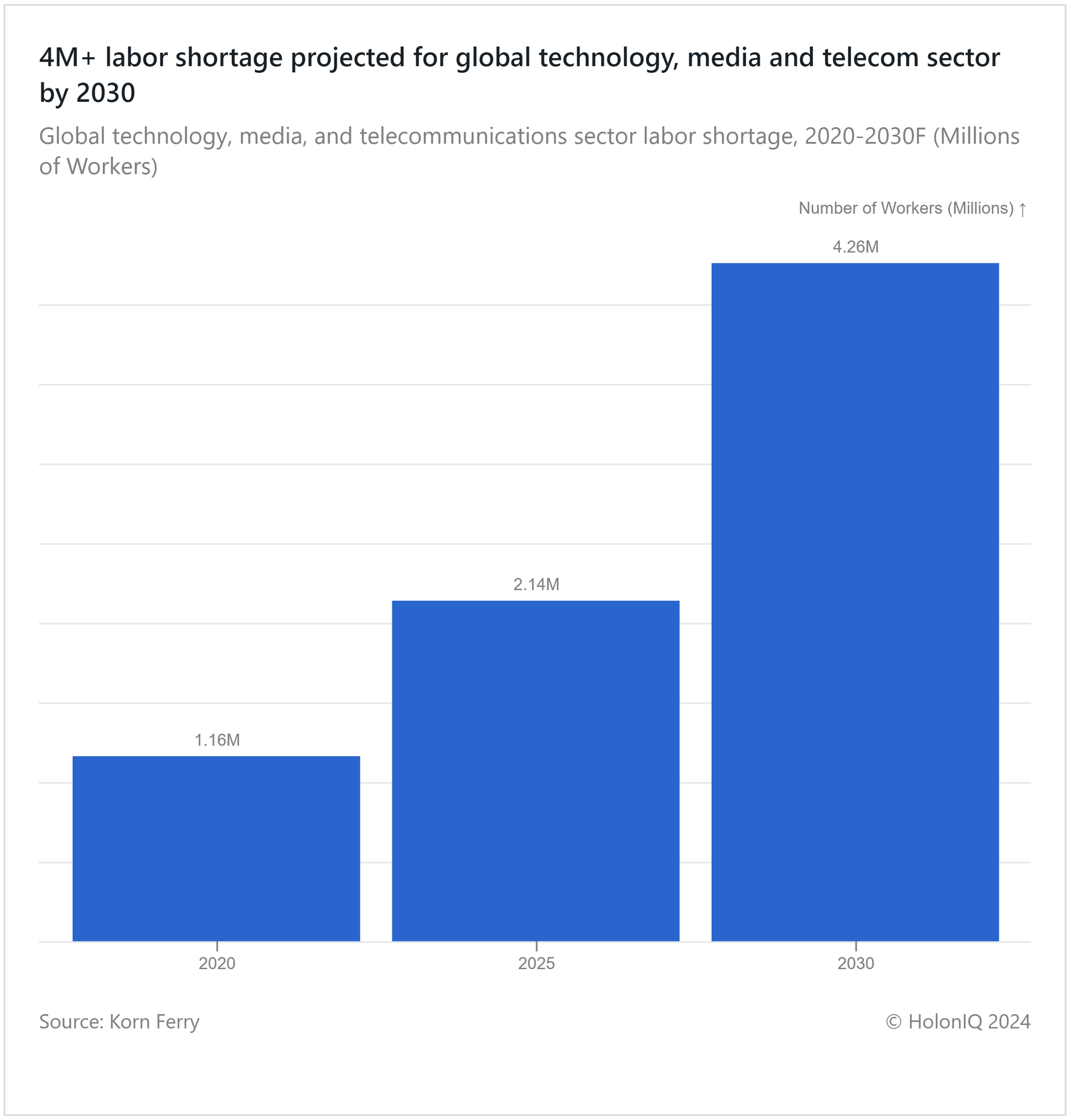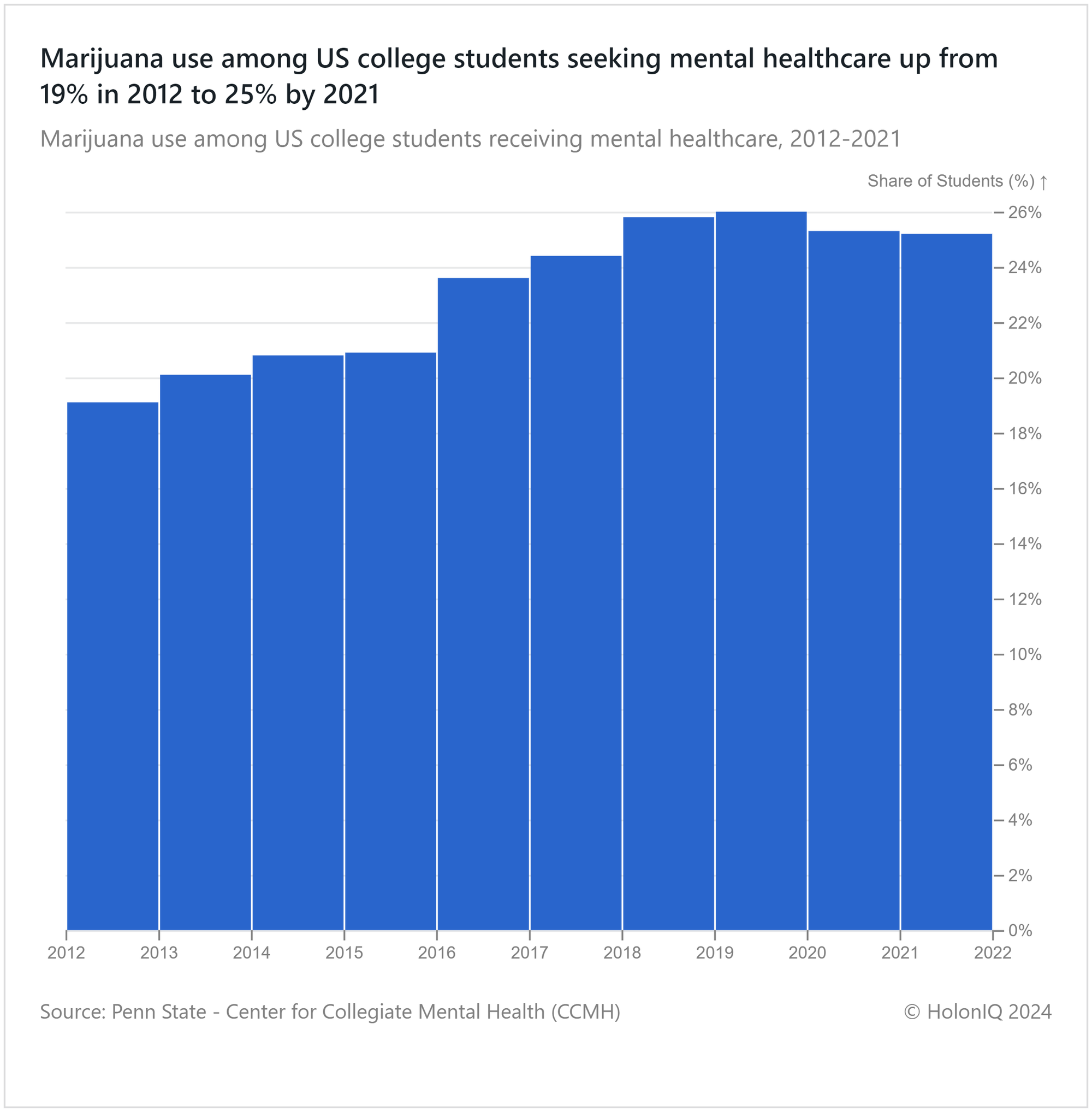👷 4x Tech Worker Shortage. Germany's 150GW EU Renewable Capacity. Student Mental Health.
Chart of the Day #118 looks at Workforce Shortage, Renewable Energy Capacity, and Mental Health.
Xin chào 🍜
China has introduced a new initiative to lower energy consumption and carbon dioxide emissions by 2024 aiming to reduce energy use and emissions per unit of GDP while increasing the utilization of non-fossil energy sources. The Biden-Harris Administration is dedicating $60M under the Inflation Reduction Act to develop a climate-ready workforce as part of the Investing in America agenda.
Today's Topics
👷 Workforce Shortage. Over 4M Tech worker shortage projected by 2030
🍃 Renewable Capacity. Germany was the European leader in renewable energy capacity in 2022
🧠 Mental Health. 1 in 4 US college students with mental health issues report cannabis use
For unlimited access to over one million charts, request a demo.
👷 Over 4M Tech Worker Shortage Projected by 2030

The global technology, media, and telecommunications sector is projected to face a shortage of 4.3 million workers and an unrealized economic output of $450 billion by 2030. While technology is expected to improve productivity across industries, companies may find difficulty in finding digital talent to keep up with consumer demand. Tech giants such as Amazon, Apple, and Google have taken steps to upskill millions of workers, but unless this demand for highly skilled workers is met, the projected labor shortage could hinder technological progress and the accompanying economic growth.
🍃 Germany Was the European Leader in Renewable Energy Capacity in 2022
Germany leads Europe in renewable energy capacity with nearly 150GW, helped by strong policy support, significant investments, public support, technological innovation, and phasing out nuclear and fossil fuels. In contrast, Spain and France each have less than half of Germany's installed capacity, highlighting a significant gap they need to fill.
🧠 1 in 4 US College Students with Mental Health Issues Report Cannabis Use

Marijuana usage among US college students receiving mental health services grew gradually from almost 19% to 26% between 2012 and 2019. However, there was a minor reduction starting in 2020, and by the end of 2021, usage had decreased to around 25%. According to research conducted by the Department of Health Behavior, students most frequently use cannabis to unwind or reduce stress, fall asleep more easily, socialize with friends, explore, or escape from issues.
Like getting this newsletter? For unlimited access to over one million charts, request a demo.
Thank you for reading. Have a great week ahead!
Have some feedback or want to sponsor this newsletter? Let us know at hello@holoniq.com
